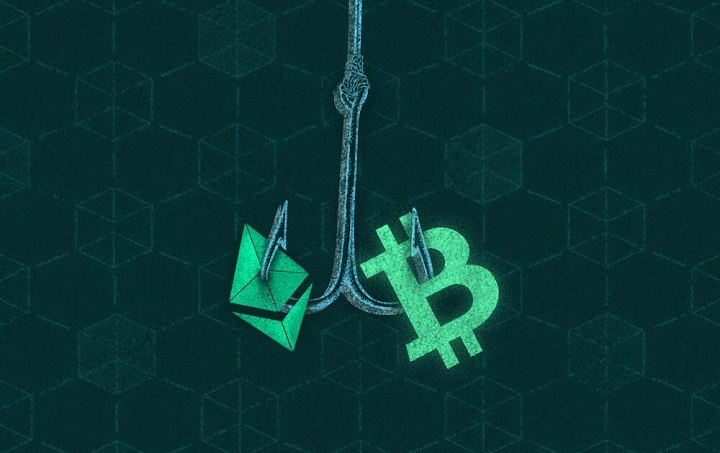Decentralization of cryptocurrencies changes it to a good target for fraud. Here you’ll learn about the biggest cryptocurrency scams of all time.
Cryptocurrencies are founded on the idea of eliminating the financial intermediaries and giving the owners of financial assets the ability to control their assets. This shift is simultaneously positive and negative as while it embodies its idea, it gives the criminals a massive chance to fool the newbies and steal their crypto assets. That you are into cryptos shows that you know how to use different types of crypto wallets to protect your assets, but to become more cautious about the potential scams of cryptocurrency, it is recommended to read this article of Tech Trends on the biggest crypto scams of all time.
Biggest Cryptocurrency Scams of All Time
Onecoin
Made well known by the BBC’s Missing Cryptoqueen broadcast series, Onecoin is presently thought to be one of the most damaging crypto scams in history. It is blieved that the Onecoin fraud – currently known to be a monstrous Ponzi scheme – snatched an estimated worth of $25 billion. Notwithstanding the scheme being closed in 2017, its leaders are captured, and its originator vanished – on the run or dead – the scam is, amazingly, as yet going. Onecoin never had a Cryptocurrency; the tech was a hoax from the beginning. This made it one of the biggest cryptocurrency scams of all time.
Poly Network Hack
A lesser-known name in the realm of crypto, Poly Network is a decentralized finance (DeFi) platform that saw one of the greatest crypto frauds of history. A hacker detected a defect in the DeFi platform that let him transfer $600 million from the network to his account.
Yet, the good news was that the hacker was a ‘white hat hacker,’ who uncovered weaknesses in a network to assist the platform with fixing its security. In a few days, the hacker returned the total amount of money and even rewarded $500,000 by the poly network for uncovering the weakness.
Bitconnect
Everybody in the crypto space knows Bitconnect. When you think about the biggest cryptocurrency scams ever, you, in a split second, think about a Bitconnect. It was so well-known for it had an excessive ceremony and huge scammy YouTubers promoting it. Carlos Matos, the one who made the Bitconnect a meme, is the reason why Bitconnect is so well known in the crypto space until today. It was released in 2016 as a lending platform, which was a Ponzi-conspire. It was promoted by big YouTubers who were bringing in cash through ref links.
CryptoNick, Trevon James, and Craig Grant were effectively promoting it. They defrauded around $3M from their communities. On January 3, 2018, Texas State Securities Board issued a cease and desist to the company, calling it a Ponzi scheme and referring to downfalls in user earnings transparency and deceiving explanations. Just a brief time after the Bitconnect exit was defrauded, the cost crashed 92% to drop to 0 ultimately.
Plexcoin
This specific ICO was nipped in the bud in Dec. 2017, after being named a typical return on investment Ponzi conspire. Plexcorp promised financial backers more than 1300% profit from investment per month before the US Securities and Exchange Commission (SEC) ordered the company to stop its operations.
More than $15 mln had been raised during the Plexcoin ICO. Fortunately, all of the funds were frozen by the SEC, and organizer Dominic Lacroix was imprisoned. It was the first time the SEC first stepped in and charged an ICO through its Cyber Crime Unit. Plexcoin’s offerings were likewise classed as a security, thus the SEC’s decision to press charges. Plexcoin is among the worst scams in crypto in history.

MonoX
$31 million in digital money were stolen by hacking into multi-chain decentralized exchange MonoX. The attacked was first identified on December 1. MonoX Finance is a decentralized finance (DeFi) platform centered around creating a framework and products to ease the general utilization of Bitcoin, Ethereum, and numerous other blockchains.
Among the funds lost are $18.2 million in Ethereum and $10.5 million in Matic. There are also smaller amounts of some other tokens, including Bitcoin, Chainlink, Unit Protocol, Aavegotchi, and Immutable X. Among the biggest crypto crimes in history this one is a mint.
Mt. GOX
An account of slip-ups, heresy, and fraud, Mt. Gox represents one of the biggest crypto heists of all time. In 2014, Mt. Gox—a Japanese-based Bitcoin exchange, experienced a monstrous hack. The hack led the exchange to lose over 600,00 Bitcoin, driving the organization to declare financial bankruptcy. The organization wasn’t just one hit by the hack; its clients endured also.
As indicated by reports, over 24,000 clients lost admittance to their Bitcoin and haven’t gotten anything in their accounts since. Indeed, considering the organization’s investigation by securities and exchange commission sec and the litigation surrounding the case, it looks unlikely that the clients will get anything. This is one of the biggest cryptocurrency scams of all time.
Pincoin and iFan
Some digital currency con artists don’t even pretend that their cryptographic money is genuine. They essentially gather seed funds from financial backers through a phony initial coin offering (ICO) and afterward vanish. That is the thing that PinCoin and iFan did in April of 2018 — and, as one of the biggest cryptocurrency scams of all time, they took some $660 million from 32,000 ICO financial backers.
Like the Bitconnnect fraudsters, Modern Tech, the Vietnamese organization that issued these two “digital forms of money,” promoted them as parts of a high return investment plan. In any case, dissimilar to the Bitconnect culprits, they never went through the difficulty of setting up a phony lending platform.
After the two coins’ blockbuster ICOs in 2018, financial backers saw that the interest payments they had been guaranteed weren’t coming — and coordinated a protest outside of Modern Tech’s Ho Chi Minh City headquarters.
The Centra Scam
Most crypto losses encompass headlines of exchanges being hacked like the ones above, or wealthy bitcoin holders having their wallets hacked. The Centra Scam was something marginally unique. The Centra card was developed to be a safe method of storing and spending bitcoin. It was put into the mainstream with supports from boxing great Floyd Mayweather and famous DJ Khalid.
Nonetheless, the organizers of Centra didn’t uncover that these stars were being paid to endorse the card, and they likewise asserted they had a partnership with VISA, which they didn’t. To get Centra going, they utilized an Initial Coin Offering (ICO), a method of receiving financial backers’ money in return for coins that could be worth a lot more in the future.
Eventually, the both founders were captured for verious chargers, and the coins became useless, leaving financial backers angry. It additionally became exposed that Mayweather and DJ Khalid were likewise fined for their association. They had to pay in excess of $700,000 altogether. Centra scam is still known as one of the biggest crypto scams of all time.
Gigi Brothers Crypto Exchange Scam
Aside from coin offerings, the exchange platforms have additionally been a hit among the most damaging crypto scams in history. One of the best is that of two Israeli brothers who offered non-existent exchanges. They tricked financial backers from different social media like Reddit.
The clients would then depend on their site for holding crypto. It disappeared following three years with all the client reserves. It had more than $100million. Although the siblings were captured in June 2019, the financial backers are yet to recuperate their assets.
ACChain
ACChain was an amazingly promising ICO token made in Shenzhen, China, which managed to boost $80 million. Yet, it doubtlessly quickly grew to become clear that issues weren’t as they showed up. A picture of the ACChain headquarter was released and ended up being nothing more than an empty room. At that point, the corporate quickly went quiet, disappearing without a clue; another mysterious scam among the greatest crypto frauds of history.
Bitclub Network

The biggest cryptocurrency scams ever known in crypto-mining area. As with Onecoin and Bitconnect, it was a Ponzi scheme that effectively utilized fantastic marketing and sales reps to get $722 million. BCN guaranteed its investors that it had bitcoin mining gear and would send them ensured benefits. Tragically, the recordings it utilized of mining equipment belonged to another mining farm. And it seems to have just been a Ponzi conspire from the first.
Quadriga
One of the worst scams in crypto in history in the form of the crypto exchange, whose founder is notoriously accepted to have faked his demise, was at first Canada’s leading and trusted crypto exchange. Nevertheless, later, it was found to have been run fraudulently from the beginning. And, its originators were competent at running other scams.
The founder was the one with admittance to the private keys holding C$250 million of its clients’ crypto when he dubiously kicked the bucket, except that, most don’t accept he passed on, and some are as yet requiring his body to be unearthed to have some evidence.
Savedroid
From the beginning, Savedroid seemed like one of the biggest crypto crimes in history of ICO. Organizer Yassin Hankir posting a picture of himself on a beach on social media with the inscription “over and out,” suggesting that he had escaped with his financial backers’ $66 million. Nonetheless, this was a publicity stunt, yet it still considerably shook financial backer confidence and prompted numerous lawsuits.
Bitcoin Savings and Trust
Perhaps the vast majority of the CT never found out about this Ponzi because it was sent off at the beginning of Bitcoin in 2011. Nonetheless, it was a precursor that showed people that crypto is an ideal objective for individuals prepared to exploit new space with bunches of uninformed individuals. The trick was set up by Trendon Shavers, known as “Pirate.”
He said that he was selling BTC to some local purchasers, and he needs more BTC to give them liquidity. Individuals began to provide him with their cash. In principle, he would sell them OTC and rebuy at a better price at the market and give individuals as much as 7 percent as more weekly. He, in the end, reported a default of BST on August 28, 2012. Most of the money was never restored to the clients.
It was demonstrated that the money moved towards the lease, vehicle-related costs, utilities, retail buys, casinos, and meals. Around then, to collect 700 000 BTC at once was huge, since the crypto space was a lot more smaller than today. In July 2013, the SEC charged Trendon Shavers of duping financial backers in a Ponzi scheme, and sentenced Trendon to a year and a half of prison. The scammer work as still known as one of the biggest crypto heists of all time.
Squid Coin
One of the most well-known TV series produced one of the biggest cryptocurrency scams of all time. The famous South Korean show, Squid Game, gave rise to an altcoin that had financial backers salivating. Indeed, even legacy media got bulldozed as the coin went from a couple of dollars to $3,000 in a short period of time.
It was another rug pull. A rug pull is a pernicious move in the digital currency industry where crypto designers abandon a project and departure with the assets they got at first. Albeit the trick was all around arranged, there were indications of deception from the start. For one, no official makers of the show were engaged with the digital currency in any way whatsoever. Also, the initial investors who purchased the coin began grumbling that they couldn’t sell the tokens.
Claims That Might Be Cautioning Indications of a Potential Crypto Scam
As indicated by the Federal Trade Commission, search for tall claims like these to assist with spotting organizations and individuals to keep away from –
- An assurance that you’ll make money: don’t accept such guarantees as they show a scam, regardless of whether there’s VIP support or tributes since these can be handily faked.
- Enormous payouts with guaranteed returns: “Guaranteed” returns are a significant warning.
- Free money: Whether in real money or digital currency, free money promises are phony.
- Enormous claims without details or clarifications: Be extremely suspicious concerning such claims.
How to Spot a Cryptocurrency Scam

- You see adverts on online media, in some cases superstar endorsed, offering unreasonable profits from investments.
- You’re reached by telephone, email, or online media about an open door utilizing aggresive methods and incentives to purchase before specific deadlines.
- You’re told your purchasing in at the ideal time. You might be offered an exceptional yield on your investment with obviously practically no risk.
- You’re compressed into settling on a choice with no ideal opportunity for thought.
Final Thought
Individuals will reprimand you that wrongdoing never pays off, but there are two sides to a coin. The same is with Bitcoin and other digital forms of money. As you can see from this account of the biggest cryptocurrency scams of all time, some were gotten for their crimes while others still free. We genuinely hope that culprits will be captured as the vast majority of the examinations are as yet opened.
We are discussing enormous amounts of money, and famous brands had their fame jeopardized. This is reason to work on finding the individuals who stole and escaped. We hope that their freedom won’t last insofar as being safe in the crypto world is fundamental for its development.
Related articles:
.
Source: Tech Trends